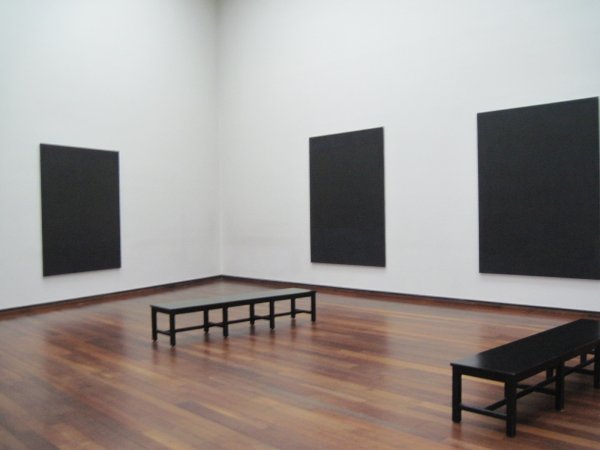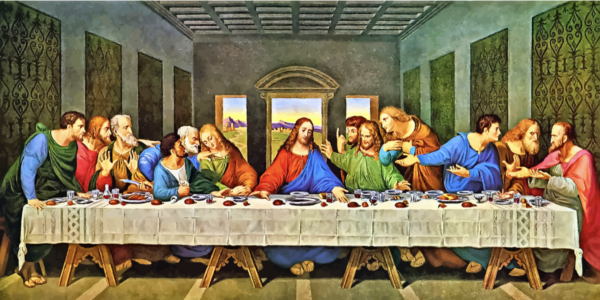Is modern art really that bad?
I’ll be honest: I think a lot of modern art sucks. It’s often pretentious, self-indulgent, lazy and overpriced. While I’d like to go on believing that and get on with my day, I have to acknowledge that this point of view feels narrow-minded. So, to try to shed some light on this heavily debated issue, here are my arguments in defense of modern art:
1. Modern art isn’t what you think it is. A lot of art is mislabeled “modern,” in the same way that a lot of what people think of as classical music isn’t classical at all. The true modern art movement happened between the late 19th century and the 1970s, and included Van Gogh, Picasso and Dali. The stuff that people really hate spans minimalism, postminimalism, conceptual art, installations, and performance art, and there’s plenty of great art being made now that doesn’t fit into any of those categories. For the sake of clarity, though, I’ll keep using “modern art” as an umbrella term. My apologies to any art historians with hurt feelings.
2. Modern art is the natural progression of history. Since the Renaissance, art has moved away from realism and towards simplification. At first, art was about drawing the world as it is (plus depicting religious scenes). But somewhere in the early 1800s artists decided that art should be more than just description and imitation. That spawned a trend of people tweaking life to be more emotionally powerful or aesthetically pleasing. Over time, artists kept simplifying and synthesizing, until we somehow ended up with blank canvases and dead sharks on display. A similar process occurred with other forms of art as well, but there’s not much complaining about how concise Hemingway was.
3. Bad art gives art a bad rap. Sometimes contemporary art is just so shockingly bad that it overshadows the rest. Some videos of bizarre and disgusting performance art have gone viral. Sure, artistic taste is a matter of opinion, but come on—some things are just nasty. One infamous video was overwhelmingly criticized by the online community and used as an example of pretentiousness in the art world. There’s modern art out there that’s profound, but still understandable; it just gets buried underneath a whole lot of bad art.
4. Artistic meaning doesn’t just exist. A big problem with judging art is that it doesn’t belong to just one person. The artist makes a piece, and is conscious of its meaning. But the final product doesn’t “have” any meaning, because meaning can’t be perceived through the senses. All the viewer sees is shapes and colors. As art critic John Berger writes, “Although every image embodies a way of seeing, our perception or appreciation of an image depends also upon our own way of seeing.” Or consider the example given by Arthur Danto in The Transfiguration of the Commonplace, in which identical square red canvasses represent different things, such as the Red Sea, anger or minimalist geometric art. Same object, different meanings. Not only is there a difference between what the artist makes and what the viewer sees, but the artwork also has meaning for society. A work of art can’t just exist. It’s influenced by an earlier movement, or fits into an artistic trend, or makes a statement on real-life events.
5. Modern artists are richer than you. There are plenty of starving artists out there, but pieces by big-name contemporary artists like Damien Hirst sell for millions. Either the modern art world is fundamentally flawed for appreciating their art, or they’re doing something right.
6. Modern art is a personal journey for the artist. I know that sounds kind of lovey-dovey, but it’s pretty significant. The artist Joan Miro, for example, spent his career perfecting his style, trying to express more with each brush stroke. This culminated in Painting on White Background for the Cell of a Recluse, a triptych of three skinny lines on white canvasses. To the viewer, it may seem underwhelming and lazy, but it represents the evolution of his life’s work and search for meaning. I may not like it, but I can at least appreciate its importance.
7. Modern art takes skill. Yes, there are some extremes: the red canvas example mentioned above isn’t technically challenging. But most abstract artists put a lot of effort into creating a certain effect in their pieces. Conveying a certain emotion without any recognizable forms is tough.
These arguments have their flaws, and they only scratch the surface of this debate. And I’m still reluctant to appreciate the things I see at a lot of galleries. Maybe all the haters are wrong, and the world isn’t ready for contemporary art, just like it wasn’t ready for Van Gogh. Honestly, I don’t know. I’m just glad that I don’t have to see whatever comes after this artistic era. That’s going to be scary.















God emperor • Oct 25, 2016 at 3:17 pm
If you can’t tell the difference between household trash and modern/contemporary art. Then it is not art you are looking at, but simply trash put on display by degenerate incompetents pretending that they are unique because they can see some special meaning in a pile of garbage.